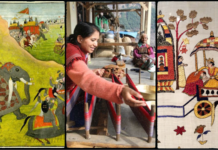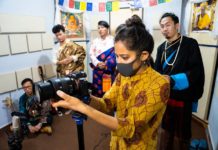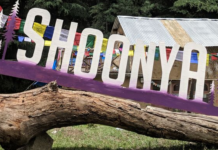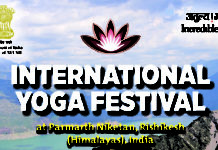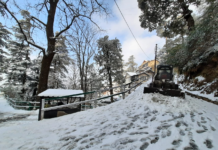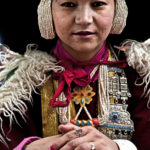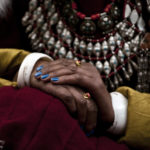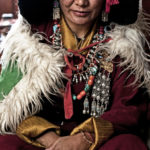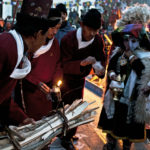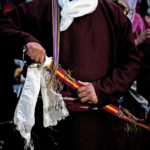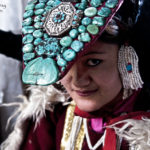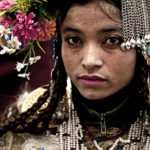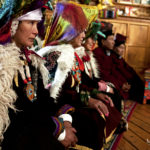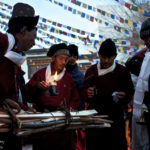This year, on January the 1st and as part of the celebrations for the Losar, the Ladakh Buddhist Association organized a Tse-Tse (New Year’s Moon Watching Ceremony) at the Chowkhang Vihara of Leh. Their goal is to keep alive, and in some cases revive, the local practices surrounding the celebrations of the Lunar New Year. The programme started with a reception of officials, followed by “Chotmey”, the lightning of butter lamps. Running around the room with dim light illuminating heads covered with gleaming topaz, I had the chance to witness different styles of traditional costumes, their details varying according to the tribes or regions the guests belong to. Each covered with numerous semi-precious stones, the Aryan people displaying floral head-dresses, the women of the LBA offered khataks, ceremonial scarfs symbolizing purity and compassion, barley and rice to the crowds before heading out into the inner courtyard of the temple to recite prayers, perform traditional dances and songs.
A couple of days ago, as light faded in the West, bubbles of flames started sprouting from the darkness of the ground, silhouetting of their amber shade the large Himalayan dwellings. Each house in the valley started twinkling with the buzz of 108 butter lamps, embodying the 108 books of Buddha’s teaching. Paths to monasteries curled up towards a dark tapisserie of stars, ablaze with fleeting fires roughed-up in the wind. The smell of burnt oil got carried away by the frost, acridity aloft in the viscous breeze.
Losar is definitely still alive.
Source: Times of Ladakh
Instagram: Introspections Nomades
Blog: Introspections Nomades







